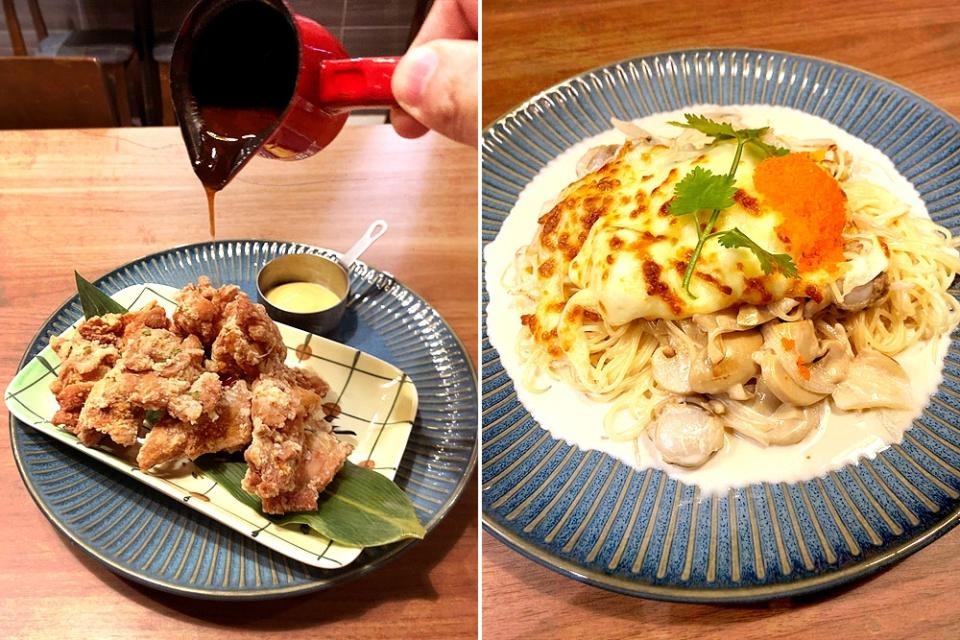Head to Tsuyoi Japanese Western Restaurant in Taman Desa for old school ‘yōshoku’ dishes such as ‘omuraisu’ and ‘hanbagu suteki’

KUALA LUMPUR, Sept 23 – This is the sun itself, golden-gossamer rays, captured on a plate.
Butter rice covered with a blanket of runny omelette. A deep fried hamburger steak, the delicate panko crumbs like copper dust. Dark, burgundy-hued demi-glace, full of patient flavour.
This is the Menci Furito Omuraisu at Tsuyoi Japanese Western Restaurant, looking very much like the sun itself.
(Or it could be the burnt canary yellow dishware that has me waxing lyrical, but whatever hits the spot, does.)

Tsuyoi in Taman Desa serves 'yōshoku' or Japanese Western cuisine.
Opened some months ago in Taman Desa (possibly the most unassuming food haven off Old Klang Road), Tsuyoi serves yōshoku or Japanese Western cuisine. This helps differentiate it from washoku or traditional Japanese fare such as sashimi, tsukemono (pickled vegetables) and miso soup.
By contrast, yōshoku originated during the era of the Meiji Restoration (1868 to 1912) when Western-influenced cooking started to take root in Japan.
Dishes such as the British-inspired nikujaga ("meat and potatoes” in Japanese) and korokke (a version of the French croquette) became more commonplace.
So this is what you’d expect upon entering the teahouse-like interior of Tsuyoi: not platters of assorted sushi or a hearty bowl of ramen, but more fusion fare such as bīfusutēki ("beef steak”) and chikin nanban (fried chicken doused with creamy tartar sauce).
Are these yōshoku staples in Tsuyoi’s menu? Well, half the fun in perusing the menu is figuring out what is included; the other half of merriment comes from deciphering the Japanisized English and French names.
Take the aforementioned demi-glace sauce. In the Japanese Western parlance of yōshoku, this is known as demigurasu – which might look like a tongue twister until you actually attempt to read it. Then it rolls off your tongue like the rich brown sauce it is.

'Tori Furito' (left) and 'Karubonara Supaghetti' (right).
We start with some Tori Furito: deep-fried chicken karaage (very Japanese) accompanied by two saucers of barbecue and cheese sauces (somewhat less traditional). It works.
This might be a good time to note that tempura – another Japanese standard that requires frying in oil – isn’t considered yōshoku as it was brought to Japan by the Portuguese in the 16th century. Which means it preceded the Meiji era.
So instead of prawn tempura, you can order some Ebi Furai (literally "prawn” in Japanese and the Japanisized version of "fry”). Rather than the light tempura batter, the prawns are breaded with panko ( breadcrumbs made from softer Japanese loaves) before being deep fried.
Fussy foodies might observe that Tsuyoi serves a subset of yoshoku cuisine influenced by French and Italian cooking known as seiyo ryori, meaning the dishes are to be eaten with Western cutlery – a knife and fork.
More generic yōshoku restaurants offer chopsticks too, to pick up pieces of tonkatsu for instance. But it’s not quite the same trying to eat mentaiko supaghetti – which is spaghetti with cod roe, of course - with a pair of chopsticks.
One might argue that mentaiko is too obvious a Japanese ingredient. Which is why I had to try Tsuyoi’s Karubonara Supaghetti.
Here the classic spaghetti is slathered with a cream sauce loaded with bacon, onion, mushroom and prawn roe. That last addition might not be something my Italian friends would recognise, but it is delicious all the same.

Hanbagu Suteki' (left) and 'Tori Furito Kare Omuraisu' (right).
For more meat, try their Hanbagu Suteki – which, when your now deft tongue unrolls the name, reveals itself to be a hamburger steak with demi-glace, vegetables and a few tubes of penne.
Every element feels Western yet the sum of its parts is undeniably Japanese. (Or at least indisputably yōshoku.)
A good chunk of Tsuyoi’s menu focuses on omuraisu or omelette rice. Besides the Menci Furito Omuraisu, we have also tried the Tori Furito Kare Omuraisu. This time the omelette-covered butter rice is paired with deep-fried chicken cutlets and a mild karē (Japanese curry sauce).

The bar is inspired by traditional 'sukiya-zukuri' architecture.
Given its Western leanings, one looks to Tsuyoi’s bar (a beautiful piece of work inspired by traditional sukiya-zukuri architecture) for wines rather than sake. A glass of Shiraz goes down wonderfully given all the dishes laden with demigurasu.

A glass of Shiraz (left) and Tsuyoi’s signature brownie (right).
If you have any space left after all that feasting, perhaps a sweet ending with Tsuyoi’s signature brownie. I can’t detect anything Japanese about this but after so many yōshoku dishes, who’s keeping count anymore?
Tsuyoi Japanese Western Restaurant
No.35A , Ground Floor, Faber Plaza, Jalan Desa Bakti, Taman Desa, KL
Open daily: lunch 11:30am-2:30pm & dinner 6-9:30pm
Phone: 03-7972 3789
* Follow us on Instagram @eatdrinkmm for more food gems.



